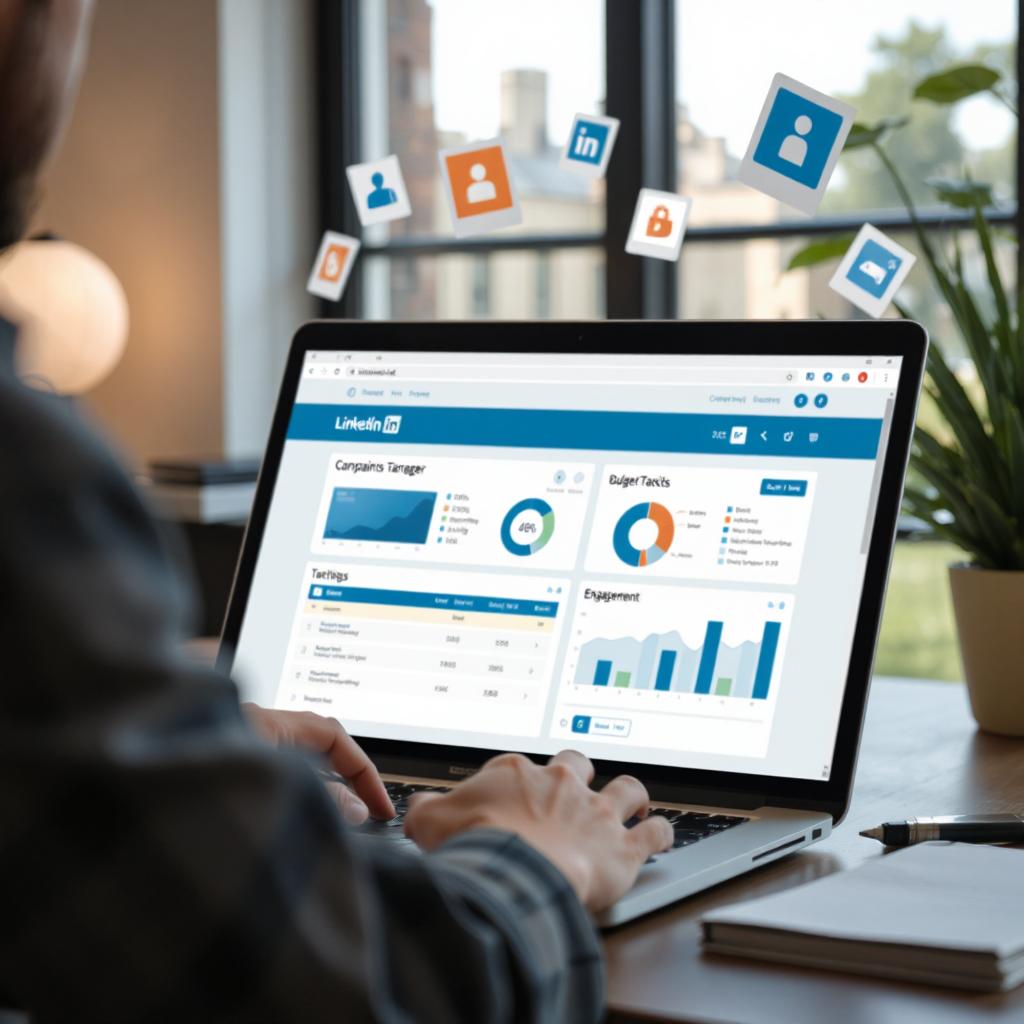Table of Contents
ToggleIntroduction
- LinkedIn Ads have become a powerful tool for businesses looking to generate leads, build brand awareness, and drive conversions among professionals. Unlike other social media platforms, LinkedIn caters primarily to B2B marketers, making it an ideal advertising channel for businesses targeting professionals, executives, and decision-makers.
- However, running a successful LinkedIn ad campaign requires more than just setting up an ad and hoping for the best. Effective LinkedIn Ads management involves strategic planning, audience targeting, ad optimization, and continuous performance tracking. This guide will provide an in-depth look at LinkedIn Ads management, covering everything from ad formats and budgeting to campaign optimization and analytics.
Understanding LinkedIn Ads
Why Use LinkedIn Ads?
LinkedIn boasts over 900 million users worldwide, making it the top social platform for professional networking. Here are a few reasons why businesses should leverage LinkedIn Ads:
- Highly Targeted Audience: LinkedIn allows advertisers to target users based on job title, industry, company size, location, and more.
- B2B Marketing Advantage: LinkedIn is ideal for reaching decision-makers and professionals.
- Multiple Ad Formats: LinkedIn offers a range of ad formats to suit different campaign goals.
- Better Lead Quality: Leads generated through LinkedIn Ads tend to have higher conversion rates compared to other social platforms.
Types of LinkedIn Ads
LinkedIn provides various ad formats to help businesses reach their marketing objectives. These include:
1. Sponsored Content
- Sponsored Content appears in users’ LinkedIn feeds and resembles organic posts. It can include images, videos, or carousel ads.
2. Sponsored Messaging
- Formerly known as Sponsored InMail, this ad format delivers personalized messages directly to a user’s LinkedIn inbox.
3. Text Ads
- Text Ads are simple, pay-per-click (PPC) ads displayed on the LinkedIn sidebar. They are great for driving traffic and generating leads at a lower cost.
4. Dynamic Ads
- Dynamic Ads are personalized, auto-generated ads that use LinkedIn profile data to create highly relevant content.
5. Lead Gen Forms
- Lead Gen Forms simplify the lead capture process by allowing users to submit their information directly within LinkedIn without leaving the platform.
Setting Up a LinkedIn Ad Campaign
Step 1: Define Your Campaign Objective
LinkedIn Ads Manager allows you to choose from various campaign objectives such as:
- Awareness: Increase brand visibility.
- Consideration: Drive website visits, engagement, or video views.
- Conversions: Generate leads, website conversions, or job applicants.
Step 2: Audience Targeting
LinkedIn’s targeting options enable advertisers to reach specific groups based on:
- Demographics (age, gender, location)
- Company Attributes (industry, company size, company name)
- Job Details (title, function, seniority)
- Interests & Skills (groups, skills, certifications)
Step 3: Choosing the Right Ad Format
Select the appropriate ad format based on your campaign goal. For example:
- Use Sponsored Content for brand awareness.
- Choose Lead Gen Forms to capture high-quality leads.
- Opt for Dynamic Ads to deliver personalized content.
Step 4: Budgeting and Bidding Strategies
LinkedIn Ads Manager offers several budgeting options:
- Daily Budget: Set a maximum spend per day.
- Total Budget: Allocate a fixed amount for the entire campaign.
- Bidding Strategies: Choose from CPC (cost-per-click), CPM (cost-per-impression), or CPS (cost-per-send for messages).
Step 5: Ad Creation and Optimization
Design compelling ad creatives that include:
- A clear and concise message.
- High-quality visuals or videos.
- A strong call-to-action (CTA).
Step 6: Tracking and Analytics
Monitor your campaign performance through LinkedIn’s built-in analytics tools. Key metrics include:
- Click-through rate (CTR)
- Cost-per-click (CPC)
- Conversion rate
- Engagement metrics
Best Practices for LinkedIn Ads Management
1. Optimize for Mobile
- Ensure your ads are mobile-friendly since a significant portion of LinkedIn users access the platform via mobile devices.
2. A/B Testing
- Run A/B tests on different ad creatives, headlines, and targeting parameters to identify what works best.
3. Use Lookalike Audiences
- Expand your reach by targeting users similar to your existing customers using LinkedIn’s Lookalike Audiences feature.
4. Retargeting
- Utilize LinkedIn’s Matched Audiences to retarget users who have previously engaged with your brand.
5. Improve Your Ad Relevance Score
- LinkedIn assigns a relevance score to ads based on engagement. High-relevance ads tend to have lower CPC and better performance.
6. Keep an Eye on Performance Metrics
- Regularly track key performance indicators (KPIs) to adjust strategies and improve ROI.
Conclusion
- LinkedIn Ads management is an essential component of any B2B marketing strategy. With proper planning, precise targeting, and continuous optimization, businesses can leverage LinkedIn Ads to generate high-quality leads and maximize ROI. By following the strategies and best practices outlined in this guide, you can create effective LinkedIn ad campaigns that drive real business results.






